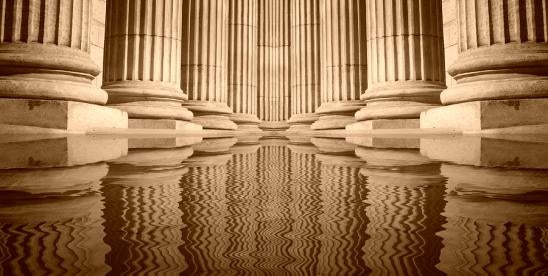The headline from the recent U.S. Supreme Court decision in Macquarie Infrastructure Corp. v. Moab Partners LP is that failure to disclose information about future business risks – a “pure” omission – cannot be the basis for a private securities fraud claim.
Some have read this ruling to be an invitation for companies to consider opting for greenhushing (i.e., not saying anything about sustainability, climate risk mitigation, or environmental, social and governance matters (ESG)) to avoid claims of greenwashing (misrepresenting or overstating how “green” a company is).
Closer reading of the opinion, however, suggests that Macquarie is a narrow decision limited to the scope and requirements of the specific securities laws and rules there at issue. Nothing in Macquarie exempts companies from specific requirements to make green disclosures in a rapidly expanding body of U.S., international and state laws and regulations. To the contrary, the Supreme Court affirms in Macquarie that companies are required to make such mandated disclosures.
Macquarie involved review of the U.S. Court of Appeals for the Second Circuit’s determination that allegations regarding Macquarie’s failure to make a disclosure – as required by Item 303 of Regulation S-K (Management’s Discussion and Analysis) – about the negative impact that a United Nations regulatory ban on high-sulfur fuels would have on its oil storage business stated a claim by investors for fraud under U.S. Securities and Exchange Commission Rule 10b–5(b). The court accepted the Second Circuit case for review because it conflicted with decisions from the Third, Ninth and Eleventh Circuits.
In reversing, Justice Sonia Sotomayor wrote for a unanimous Supreme Court that a “duty to disclose ... does not automatically render silence misleading under Rule 10b-5(b).” The court explained that its decision “confirms that the failure to disclose information required by Item 303 can support a Rule 10b–5(b) claim only if the omission renders affirmative statements made misleading” and also noted:
Rule 10b–5(b) does not proscribe pure omissions. The Rule prohibits omitting material facts necessary to make the “statements made . . . not misleading.” Put differently, it requires disclosure of information necessary to ensure that statements already made are clear and complete (i.e., that the dessert was, in fact, a whole cake). This Rule therefore covers half-truths, not pure omissions. Logically and by its plain text, the Rule requires identifying affirmative assertions (i.e., “statements made”) before determining if other facts are needed to make those statements “not mis[1]leading.” [citations omitted] It once again “bears emphasis that §10(b) and Rule 10b–5(b) do not create an affirmative duty to disclose any and all material information. Disclosure is required under these provisions only when necessary ‘to make . . . statements made, in the light of the circumstances under which they were made, not misleading.’” Matrixx Initiatives, Inc. v. Siracusano, 563 U. S. 27, 44 (2011) (quoting Rule 10b–5(b)). (emphasis added)
However, the court also carefully distinguished other securities laws, like Section 11(a) of the Securities Act of 1933, that do expressly proscribe pure omissions, by saying:
“Statutory context confirms what the text plainly provides. Congress imposed liability for pure omissions in §11(a) of the Securities Act of 1933. Section 11(a) prohibits any registration statement that “contain[s] an untrue statement of a material fact or omit[s] to state a material fact required to be stated therein or necessary to make the statements therein not misleading.” 15 U. S. C. §77k(a). By its terms, in addition to proscribing lies and half-truths, this section also creates liability for failure to speak on a subject at all. See Omnicare, 575 U. S., at 186, n. 3 (“Section 11’s omissions clause also applies when an issuer fails to make mandated disclosures—those ‘required to be stated’—in a registration statement”). There is no similar language in §10(b) or Rule 10b–5(b). Cf. Ernst & Ernst v. Hochfelder, 425 U. S. 185, 208 (1976) (“The express recognition of a cause of action premised on negligent behavior in §11 stands in sharp contrast to the language of §10(b)”). Neither Congress in §10(b) nor the SEC in Rule 10b–5(b) mirrored §11(a) to create liability for pure omissions. That omission (unlike a pure omission) is telling. Cf. Blue Chip Stamps v. Manor Drug Stores, 421 U. S. 723, 734 (1975) Cite as: 601 U. S. ____ (2024) Opinion of the Court (‘When Congress wished to provide a remedy . . . it had little trouble in doing so expressly’).”
The court’s confirmation in Macquarie that where disclosures are mandated they must be made mitigates against any suggestion that the court’s rejection of claims under Rule 10b-5(b) for pure omissions invites companies to opt for greenhushing in lieu of green disclosures in an effort to avoid greenwashing claims.
At bottom, companies and investors need to understand that the narrow holding in Macquarie does not relieve companies from their affirmative express obligations to make accurate sustainability, climate, ESG and other green disclosures required by a broad range of U.S., international, and state laws, regulations, and guidance. These include the Securities and Exchange Commission’s (SEC) final climate disclosure rule, currently stayed by the SEC pending judicial review, along with the Federal Trade Commission’s Green Guides; the European Commission’s Corporate Sustainability Reporting Directive and European Sustainability Reporting Standards; and the California Climate Accountability Package.



 i
i


